The last weekend, I listened a radio program, in which they talked about one of the most beautiful villages in Spain: Albarracín; and, then, I wanted to talk to you about it. This village, placed in the province of Teruel (Aragon), it has 1054 inhabitants. And, since 1961, it is National Monument.It is also proposed, by Unesco, to be declared a “World Heritage Site” for the beauty and importance of its historical heritage.
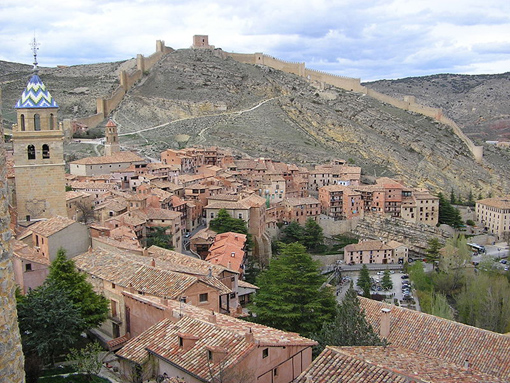
Albarracín and its wall
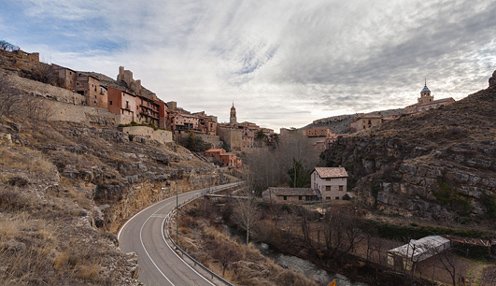
Albarraín from the road –the road A512 from Teruel—
It is located near the ancient Roman city of Lobetum. The Arabs called the place “Alcartam” that would derive of the old place-name of Ercávida, happening to be denominated later like Aben Razin, name of a Berber family, from where would derive its present name. Other people think that the term "Albarracín" would derive from the Celtic alb, 'mountain', and ragin, 'vine', 'grape' or the anthroponym Razin.
Without a doubt, the toponym comes from Ibn (ben) son of Razin (kings taifas from Albarracín from Fitna to Ibn Mardanis, king Lobo from Murcia, ie the place of the Razin´s children, although, until the 19th century, its official name Is City of Santa Maria de Albarracín, being denominated Santa Maria de Oriente, in Islamic time.
The old town is built on the slopes of a mountain, almost entirely surrounded by the river Guadalaviar. To the north, is the Sierra of Albarracín, and, to the south, the mountains Universal. Part of its municipal term is occupied by the protected landscape of the Pinares de Rodeno.
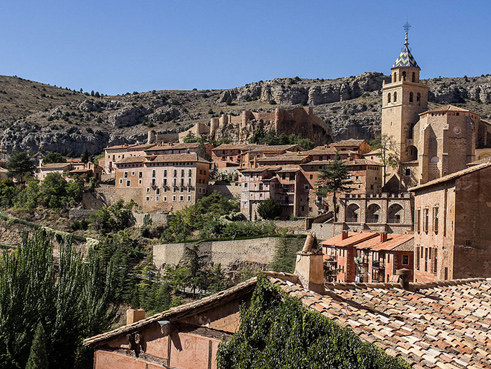
Albarracin from the Main Square
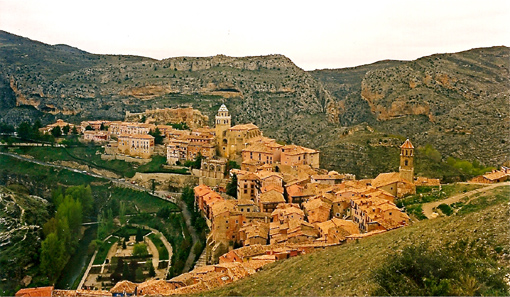
Albarracin and its Sierra
In the surroundings, the Guadalaviar, Tajo, Júcar, Cabriel and Jiloca rivers are born.
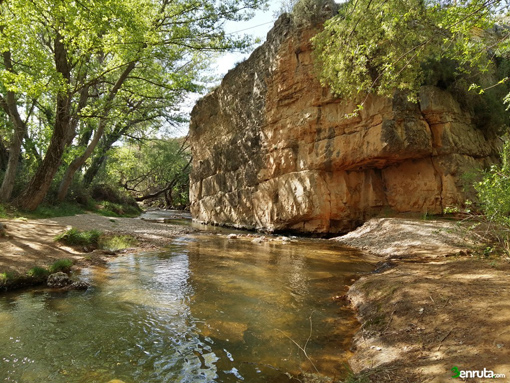
The river Guadalaviar
Its municipal term is, for historical reasons, one of the biggest of the province of Teruel --only surpassed by Alcañiz--.
The village is perched on a rock and surrounded by the Guadalaviar. On this side and facing the river, are built houses hung. Within the village, its streets are steep and narrow, with very picturesque corners. The construction offers the original popular architecture with the own forge of the province, besides having the characteristic reddish color, called Rodeno.
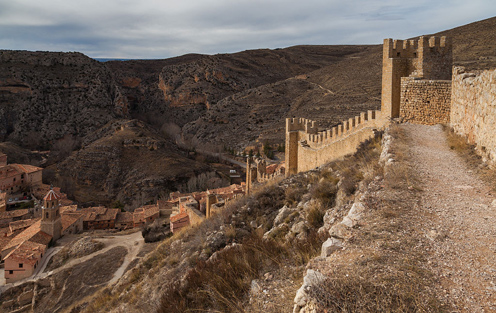
Albarracin from its wall, built in the XIV century

Some hung houses

A narrow street
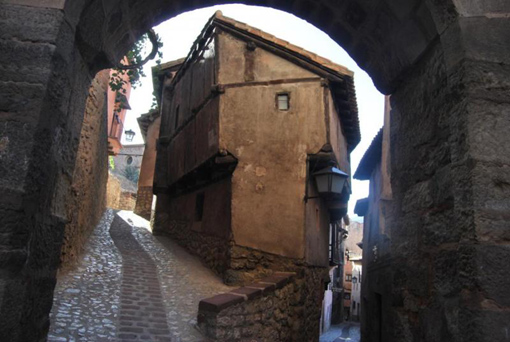
The famous house Julianeta

Typical houses in the centre

A nice corner in the centre
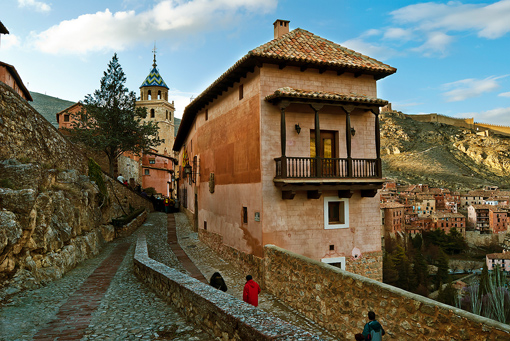
Another nice corner in the village
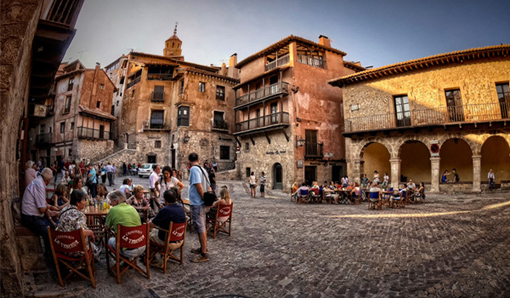
Another small square
In the Iron Age, Albarracín was inhabited by the Celtic tribe of the Lobotans. Important epipalaeolithic and Neolithic cave paintings of Levantine, schematic and semischemátic style have been found, in the pine of the rodeno. During the Roman period, was called Lobetum and, in times of the Visigoths, Santa Maria de Oriente.
During the Andalusian period, specifically the eleventh century, the Berber clan of the Banu Razin came to power becoming the sovereign dynasty of the taifa of Albarracín. From this lineage, it comes the own name of the village (al-Banu Razin: (the city) of the sons of Razin). From this magnificent stage, two important testimonies are preserved: the Andador tower, located at the top of the outer enclosure, and the Albarracín Castle, which housed the ancient citadel of the Banu Razin.
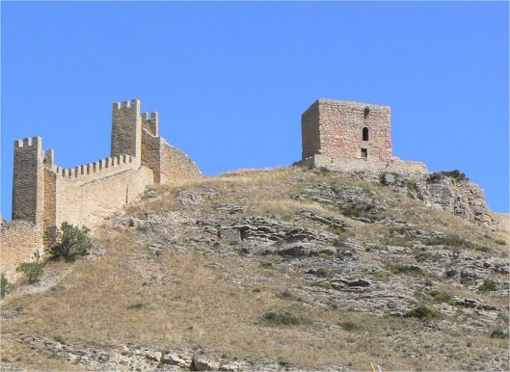
Tower of the Andador
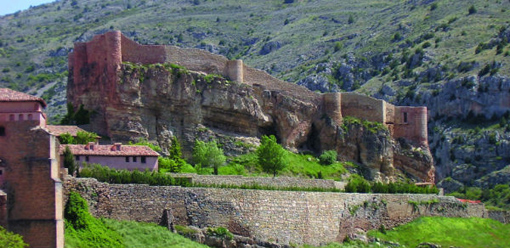
Castle of Albarracin
The Taifa later passed, by assignment and not by conquest, to the Christian family of Navarrese lineage of the Azagra, who maintained de facto the independence of Castile and Aragon from 1170, reaching to create an own bishopric. Also the powerful lineage of Lara exerted its sovereignty on Albarracín. After the failure of conquest, by Jaime I in 1220, it is Pedro III of Aragon who conquered it, in 1285, after besieging it, passing definitively to the Crown of Aragon, in 1300. This series of political facts was based on the importance of the strength and of the defensive system of Albarracín.
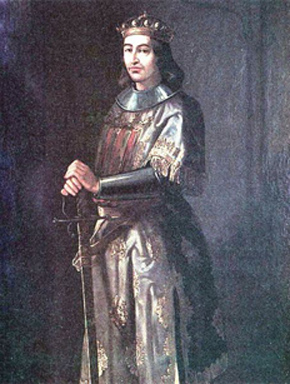
Pedro III of Aragon
It is an old episcopal seat denominated, first Arcabricense and later Segobricense, until, after the dismemberment of the churches of Segorbe (Castellón) of the churches of Albarracín, it happened to denominate Albarracinense, after Papal Bull of John Paul II, maintains its independence but it happens to be governed by the Bishop of Teruel, who is also Bishop of Albarracín.
On June 21, 1257, the King Jaime I granted, in Teruel, to the Community of Santa María de Albarracín or Community of villages of Albarracín, the privilege on jurisdiction of sexmeros*, assistants and jurors of that city. The *sexmero was responsible for the business and rights of a "sexmo"; a sexmo was a medieval Castilian administrative division, which generally comprised a part of the rural term, dependent on a city. The sexmos were equivalent to the sixth part of a determined territory.
During the Spanish Civil War, fights took place, in the locality, between the republican troops and the Francoists, changing several times the control of the population between both sides. In July of 1937, a republican offensive took place on the locality, constituting the greater confrontation warlike had been, in the locality, during the war. In a quick attack, on July 8 Republicans took control of the village, except for the Czouncil and the Cathedral, where they remained besieged military and civilians, who had previously sought refuge. The rebels responded by sending reinforcements and on July 13 managed to reconquer the locality and expel the Republican troops.
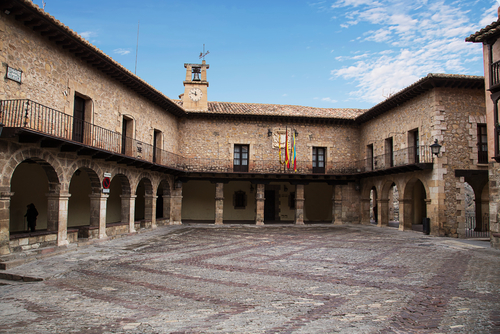
The square of the Council

General view of the Cathedral
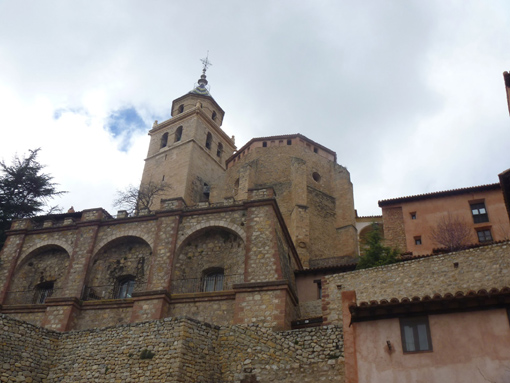
The Cathedral
Well, I hope that you have liked this article and hope that you can wish and can visit this nice village.
Until my next post, kind regards,
Luis.
Sponsored by Costaluz Lawyers.
Please click below:
